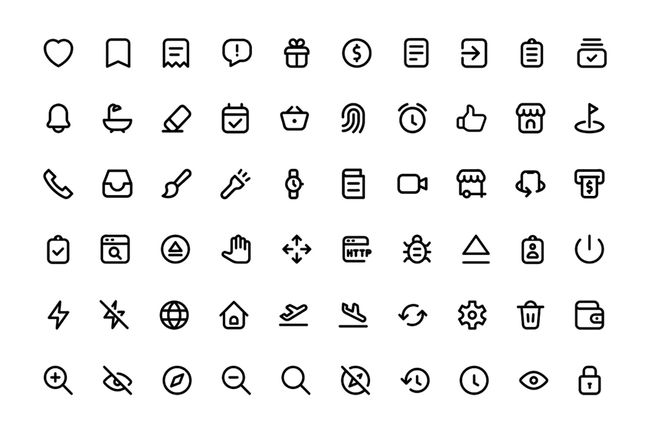Making the web faster and more user-friendly
Optimizing SVG Usage for Web Performance: A Comprehensive Discussion
In a recent conversation among web performance enthusiasts, the topic of efficiently loading SVGs (Scalable Vector Graphics) on websites was explored in depth. The discussion centered around the best methods for incorporating SVGs, particularly icons, with performance in mind. Various techniques were compared, including inline SVGs, the <img> tag, CSS backgrounds, and SVG sprites. Here's a summary of the key insights and recommendations from that conversation.

Let's consider the following methods for loading SVGs.
1. Inline SVGs #
Usage: Ideal for above-the-fold icons like logos or menu buttons, especially when you need to style or animate individual elements within the SVG using CSS or JavaScript.
Advantages:
- Styling Flexibility: Allows for direct manipulation of SVG elements.
- Immediate Rendering: No additional HTTP requests since the SVG is part of the HTML.
Disadvantages:
- Increased DOM Size: Each inline SVG adds to the DOM, which can impact performance.
- Performance Overhead: Selectable and styleable elements may affect rendering performance.
Best Practices:
- URL-Encoding over Base64: When embedding SVGs inline using data URLs, URL-encode them instead of base64-encoding to achieve better compression.
- Limit Use: Reserve inline SVGs for essential, above-the-fold graphics that require interactivity.
2. <img> tag #
Usage: Suitable for general icons and images where styling or interaction isn't necessary.
Advantages:
- Lazy Loading: Supports the
loading="lazy"attribute to defer loading images until they are needed. - Simpler DOM: Keeps the DOM cleaner compared to inline SVGs.
Disadvantages:
- Limited Styling: Cannot manipulate internal SVG elements directly through CSS or JavaScript.
- Static Content: Not ideal for icons that need to change color or shape on hover.
Best Practices:
- Dimension Attributes: Always include
widthandheightto prevent layout shifts. - Avoid Lazy Loading for Immediate Assets: Do not lazy-load images that are crucial to the initial rendering or immediate interactions like hover states.
3. CSS background images #
Usage: Best for decorative graphics or background patterns that don't require interactivity.
Advantages:
- Separation of Concerns: Keeps background images within CSS, maintaining a clean HTML structure.
- Conditional Loading: Can be combined with media queries or JavaScript for responsive designs.
Disadvantages:
- Limited Control: Harder to manipulate or animate compared to inline SVGs.
- Accessibility Issues: Background images are not read by screen readers.
Best Practices:
- Lazy Loading: Use JavaScript libraries like vanilla-lazyload to defer loading of background images if they are not immediately visible.
- Appropriate Usage: Reserve for non-critical, decorative elements.
4. SVG sprites and <use> tag #
Usage: Effective when you need multiple instances of icons that can be styled or animated, and when serving SVGs from the same domain.
Advantages:
- Reusable Symbols: Define SVG symbols once and reference them multiple times.
- Styling Capabilities: Allows CSS styling of SVG elements as if they were inline.
- Reduced HTTP Requests: Consolidates icons into a single file.
Disadvantages:
- Initial Setup Complexity: Requires creating and managing an external sprite file.
- Same-Origin Policy: The external SVG sprite must be on the same domain due to browser security restrictions.
Best practices:
- Efficient Organization: Group commonly used icons into a single sprite file.
- Fallbacks: Implement fallbacks for browsers that might not support external SVG sprites.
Match method to your use case #
Choose the SVG loading method based on the specific needs of your project. Inline SVGs for interactive elements, <img> tags for static icons, CSS backgrounds for decorative images, and SVG sprites for reusable, stylable icons.
Performance considerations #
- DOM Size Matters: Excessive inline SVGs can bloat the DOM and degrade performance.
- Lazy Loading Wisely: Use lazy loading for images not immediately needed, but avoid it for assets required for initial interactions or hover effects.
- Compression Techniques: Prefer URL-encoding over base64 when embedding SVGs in data URLs to maintain better compression ratios.
Styling and interactivity #
- Interactive Icons: Use inline SVGs or SVG sprites with the
<use>tag when icons need to respond to user interactions. - Static Icons: Use
<img>tags for icons that don't require interactivity to keep the DOM lean.
Accessibility and semantics #
- Proper Attributes: Include
altattributes for<img>tags andaria-labelorrole="img"for inline SVGs to enhance accessibility. - Avoid Background Images for Essential Content: Since CSS background images are ignored by assistive technologies, don't use them for important content.
Avoid outdated techniques: #
- Image Sprites: Traditional image sprites are largely considered outdated due to the complexity and diminishing returns in the era of HTTP/2 and HTTP/3.
- Font Icons: Consider migrating away from icon fonts to SVGs for better scalability and styling flexibility, as detailed in Erwin Hofman's article.
Conclusion #
Optimizing SVG usage on websites involves balancing performance, maintainability, and functionality. By selecting the appropriate method for loading SVGs based on their purpose—whether for static display, styling, or interactivity—you can enhance both the user experience and site performance. Remember to consider factors like DOM size, lazy loading, and accessibility when implementing SVGs in your projects.
Further reading #
- SVG sprites generator
- Styling SVG by Sara Soueidan
- From Fonts to SVG: An Icon Migration Strategy by Erwin Hofman
- vanilla-lazyload GitHub Repository by Andrea Verlicchi (yours truly)